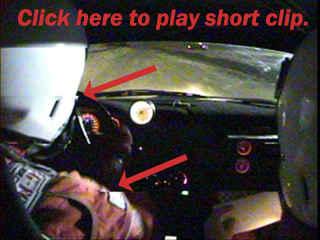
Kenwood is pro APRS. Something must have been lost in the translation when the marketing guys wrote up the specs for the TM-V71A. It lists APRS, and then to the right it says: NO.
What does that mean? It certainly can transmit and receive on 144.390. So, it doesn’t have a built in TNC like its older brother the 710. So? It’s certainly an APRS capable radio. It even has the industry standard 6-pin mini din ready for packet data on the back of the rig. The TM-V71A is great for APRS duties.
Something tells me that the marketing department wants you to steer over to the RC-D710. It’s a ready to go TNC with all sorts of options that make your V71A ‘feel’ like you spent the big bucks. Well, the small bucks are okay with me. Matter of fact, with this unit connected to an Argent Tracker2 and a Garmin Nuvi 350 – it’s about $1500 worth of kit for about $600. Stay tuned as I install it over the next few weeks.
First challenge: Getting the radio to talk to your TNC (tracker).
I guess I could blame those marketing guys again, but I don’t know who messed up the verbiage in the manual on the pin-outs for the DATA jack. I opened up the manual and flipped to the section on packet operation. Easy enough, I just have to provide audio in/out, PTT and ground. Wait… What pin is PTT?
1 PKD input, 2 DE, 3 PKS input, 4 PR9 output, 5 PR1 output, 6 SQC output
Seriously Kenwood? Where did these abbreviations come from?
The description is just as confusing. For pin 3: ‘L’ is transmitted and the microphone is muted. The letter L? The low? What?!
Does that give one any indication that pin 3 is the PTT? Leading to the confusion is the ability to set the “baud rate” for the radio. (Please take note the quotes…) This had me questioning if there actually was a TNC in the radio and whether to pass audio data or digital data to the unit.
Panicked, I called Brian NJ6N for some help. He chuckled at the descriptions and pointed me to buxcomm.com where a handy reference sheet tells us the following.
1 DATA IN, 2 GND, 3 PTTP, 4 DATA OUT, 5 AF OUT, 6 SQ
Now that’s more like it. Brian also explained that the baud rate has to do with the filtering the unit is doing. For very high data rates it skips some of the internal circuitry that could lead to some issues with received packets. For our purposes, APRS is 1200 baud and the default settings will be fine.
Cable time: Because I’m super impatient, I scrounged the house looking for a 6-pin mini din connector. “Hey, that PS/2 keyboard / mouse connector looks like it could do the trick!” Before you could say “e-waste” I had the end off a PS/2 keyboard on the desk hooked to an ohm meter. Bad news – They don’t use pin 2, and they don’t even bother to leave an un-used wire in there. Don’t bother tearing open the mouse – it also doesn’t utilize pin 2 at all. Thinking that this is the end of my experiments I slice the connector open and take a closer look. Pin 2 is there and, sure enough, nothing is connected to it. After digging a channel with a sharp knife I find there is enough there to solder. The elegant solution I came up with is to ground the pin to the outer shield and use that for pin 2 ground. A little heat shrink and we’re back in business. For those of you with patience, it looks like this cable from Byonics should do the trick.
Using the Tracker2 manual I came up with the following pin configuration:
Argent Tracker2 >>> Kenwood TM-V71A
DB9 >>> 6-pin mini
1 audio out >>> 1 data in
2 squelch input >>> 6 squelch out
3 ptt >>> 3 ptt
5 audio in >>> 5 af out
6 ground >>> 2 ground
Plugged in and ready to go: I turned on the radio and tuned to 144.390. I specified in the menu which side my packet operations would be on. My Tracker2 blinked to confirm it was hearing packets! A quick test and I was able to send a message to K6SOA-9. Receive and transmit both work. Now, one side of the radio will be dedicated to APRS, but this is no different then the D700. A remote switch is in the works to allow me to turn off the tracker and regain the use of both A and B sides, should I need a cross-band repeat or dual receive.

Next time I’ll be detailing the entire install. From hacking the existing FM antenna mount, to Garmin Nuvi 350 APRS messaging. I even tackle getting the Honda Fit amplified antenna working inside the car. As you can see I’ve added a 12v cig jack and Anderson power pole panel. Stay tuned!








